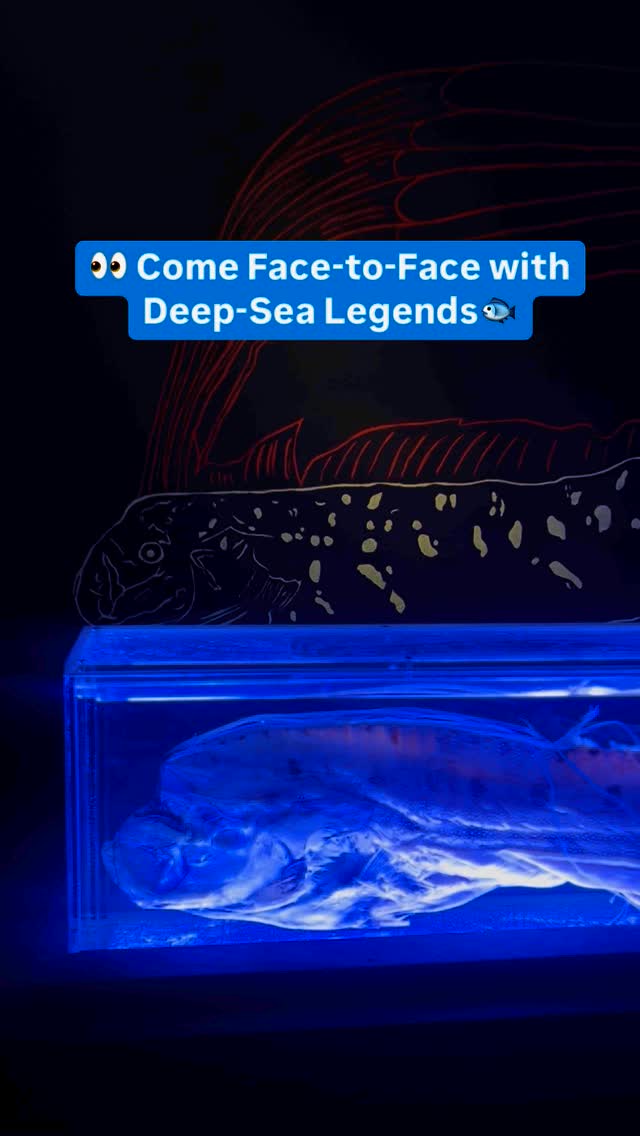- Oarfish: Characteristics and Habitat
- Historical Significance and Cultural Impact
- Recent Discoveries from Scripps Institution of Oceanography
- Conservation Efforts and Deep-Sea Research
- Visitor Engagement at the Exhibit
Oarfish are remarkable creatures that inhabit the depths of our oceans. With their elongated bodies and shimmering scales, they can measure up to 36 feet or more, displaying a captivating appearance that has sparked both intrigue and fear among coastal communities. These fish reside in deep ocean waters, often found at depths of 200 to 1,000 meters. Their habitats span across all oceans, particularly in warmer waters, where they are sometimes spotted near the surface. The oarfish’s diet consists mainly of small fish and zooplankton, which they capture using their long, whip-like bodies.
The historical significance of the oarfish is well established, entwined with folklore and myths. Many coastal cultures have associated sightings of oarfish with impending natural disasters, such as earthquakes or tsunamis. This belief likely stems from their unusual appearances during rare beach wash-ups. Other cultures revered oarfish as messengers from the sea, often depicting them in artistic forms or using them in ceremonial contexts. The fish’s striking visual traits have made them subjects of various legends, highlighting the interplay between human beliefs and natural phenomena.
Recent discoveries from the Scripps Institution of Oceanography have shed light on these elusive creatures. The institution boasts one of the world’s largest collections of marine vertebrates, and their research efforts have led to significant advancements in the understanding of deep-sea biology. Two notable specimens include a Short-crested Oarfish, which washed ashore at Grandview Beach near Leucadia, California, in November 2024, and a King-of-the-Salmon that came ashore in Mission Beach, San Diego, in 1968. Such finds are critical for researchers, providing valuable data on the physiology and behavior of oarfish, particularly with respect to their habitat preferences and reproductive behaviors.
Conservation efforts surrounding these unique fish are gaining momentum as scientists recognize the need to protect deep-sea environments. Oarfish, like many deep-sea organisms, face threats from climate change, overfishing, and habitat destruction. Initiatives aimed at preserving marine biodiversity focus on creating marine protected areas and regulating fishing practices to ensure sustainable populations of marine life. Ongoing research at institutions like Scripps is critical for informing these conservation strategies, as it provides a clearer picture of the ecological roles that oarfish and similar species fulfill in ocean ecosystems.
The exhibit featuring oarfish at the Scripps Institution is designed to engage visitors and broaden understanding of these fish. Through interactive displays, guests can learn about the biology of oarfish and their importance to marine ecosystems. The exhibit also highlights current research efforts aimed at uncovering more about their behavior and environmental needs. Public interest is vital in fostering a culture of conservation; therefore, education and awareness are primary goals of such exhibits.
By drawing connections between folklore and scientific research, the exhibit underscores how ancient beliefs have shaped humanity’s understanding of the ocean. Visitors will find themselves immersed in narratives that blend cultural history with scientific inquiry, enhancing their appreciation for marine life. In an era where ocean conservation is more crucial than ever, educating the public about species like the oarfish helps foster stewardship for the environment.
Oarfish remain creatures of fascination, not only for their size but also for the intrigue that surrounds their natural history. The combination of cultural stories and scientific data creates a comprehensive picture of their role in the ocean ecosystem. Through continued exploration, research, and public outreach, we can unravel more aspects of their lives and the environments they inhabit. The ongoing studies at institutions like Scripps are vital for understanding the impacts of human activities on ocean life and for crafting effective conservation measures.
As visitors engage with the oarfish exhibit, they will come away with a greater understanding of deep-sea ecosystems and the critical role oarfish play within them. The initiative exemplifies how scientific institutions can bridge the gap between research and public knowledge, inspiring future generations to value and protect marine biodiversity.
In summary, the oarfish exhibit at the Scripps Institution of Oceanography serves as an essential platform for uniting cultural narratives with scientific discovery. It emphasizes the importance of both research and conservation efforts, ensuring that these incredible creatures are preserved for the future while also celebrating their captivating presence in our oceans. The challenges facing marine life today require a concerted effort from scientists, policymakers, and the public; informing and engaging all stakeholders is vital in carrying forward the mission of ocean stewardship.
*****
Source Description
🐟Oarfish are Oar-some🐟We’re thrilled to announce a new, limited-time exhibit now open at – Oarfish: Recent Discoveries from the Scripps Institution of Oceanography Collection.
The exhibit weaves together the folk history of the with the Marine Vertebrate Collection at @scripps_ocean, home to one of the world’s largest collections of deep-sea fish.
It also highlights two rare deep-sea specimens that washed ashore locally, including a Short-crested Oarfish found on Grandview Beach near Leucadia, California, in November 2024, and a King-of-the-Salmon that came ashore in Mission Beach, San Diego, in 1968. Learn more in the link in our bio.


